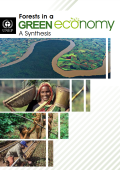Based on 15 case studies as well as a literature review, this study assesses the links between corporate environmental governance and financial performance.
The overall evidence of the study is strongly supporting the argument that sound environmental governance policies, practices and performances are likely to improve in improved financial performance. More detailed findings of the study include:
Design for Sustainability (D4S), improving products while taking environmental and social concerns as key strategic elements into consideration, is one of the most useful innovation approaches available to entreprises today.
In developing economies, due to limited awareness and experience, immediate technical capacity building is needed to introduce D4S. This practical approach can help intermediaries that work with SMEs and the companies they partner with, execute a D4S project.
This publication describes what D4S is and what might motivate companies to adopt it. The backbone of the publication is composed of the three practical, step-by-step approaches to execute a D4S project: needs assessment, redesign and benchmarking. Clear reference information and case studies that can support the project are also provided.
There are many challenges and obstacles facing developing countries in moving their economies to more environmentally friendly paths. On one hand, this should not prevent the attempt to urgently incorporate environmental elements into economic development.
On the other hand, the various obstacles should be identified and recognised and international cooperation measures should be taken to enable and support the sustainable development efforts. The conditions must be established that make it possible for countries, especially developing countries, to move towards a “green economy.”
The main conditions and dimensions have been recognised in the negotiations that led to Rio 1992, and are well established in the Rio Principles and in Agenda 21. The treatment of the “green economy” in Rio Plus 20 should be consistent with the sustainable development concept, principles and framework, and care should be taken that it does not detract or distract from “sustainable development”.

Drawing on UNEP’s Green Economy Report, this UNEP brief provides an evidence‐based roadmap for policy makers, the private sector, forest sector and forest dwellers alike. The paper includes an overview of the role of forests in the green economy, policy recommendations for forests in a green economy, and a number of success stories.
The paper concludes that to fully realise the benefits of forests in a green economy, governments and the international community will need to take an active role, including through policy reforms to create incentives to maintain and invest in forests and introduce disincentives to modify market signals and associated rent‐seeking behavior. Examples of policies include national regulations, smart subsidies and incentives, information management, supportive international markets, legal infrastructure, and conducive trade and aid protocols.
In this provocative paper, PCI Executive Director Asher Miller and Transition Movement Founder (and PCI Fellow) Rob Hopkins make a convincing case for why the environmental community must embrace post-growth economics and community resilience in their efforts to address the climate crisis.
